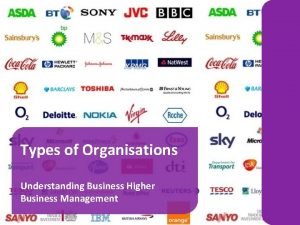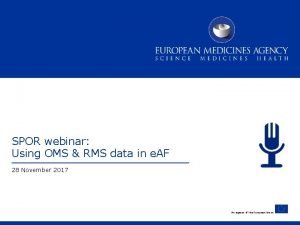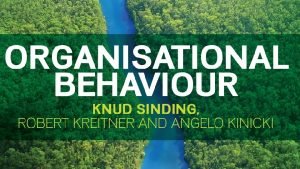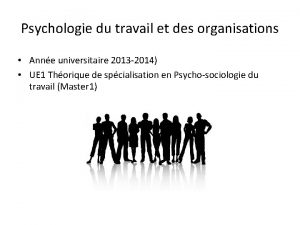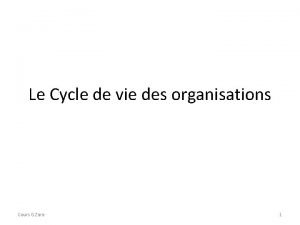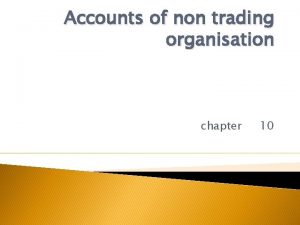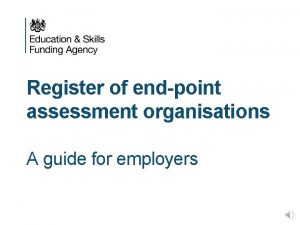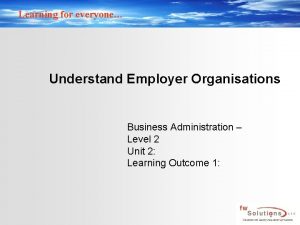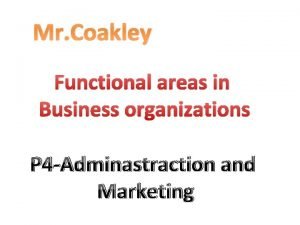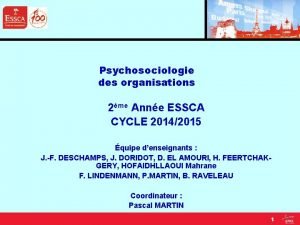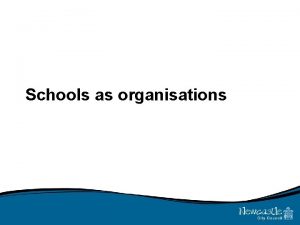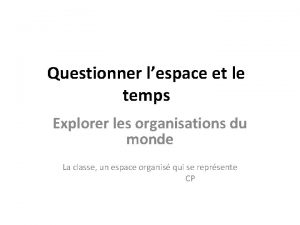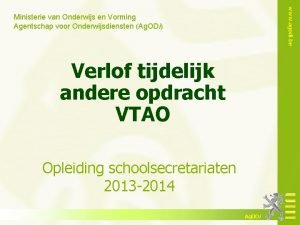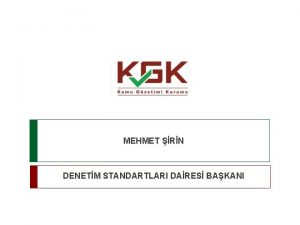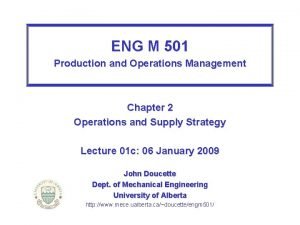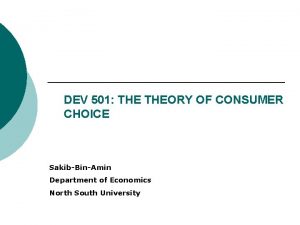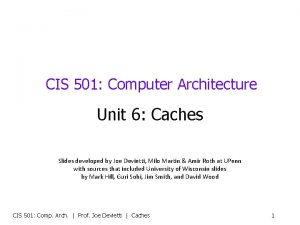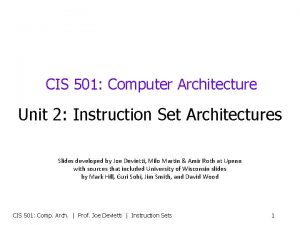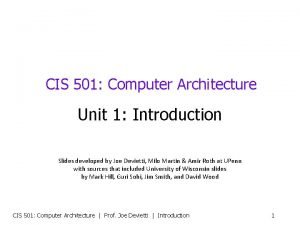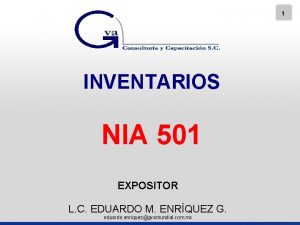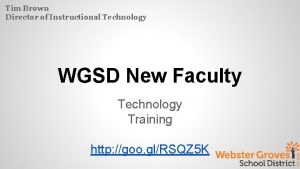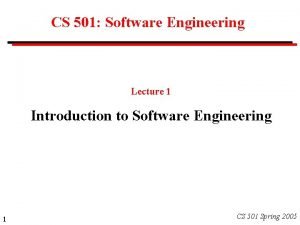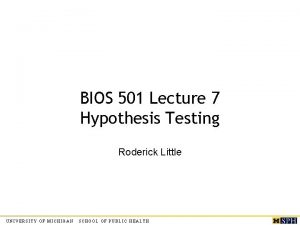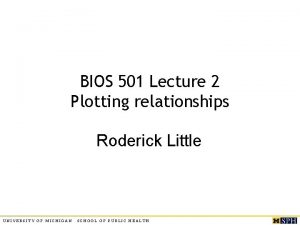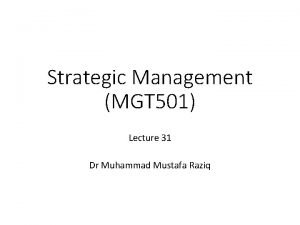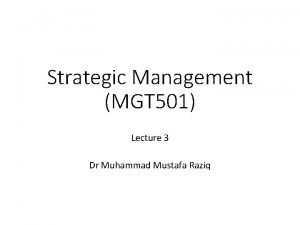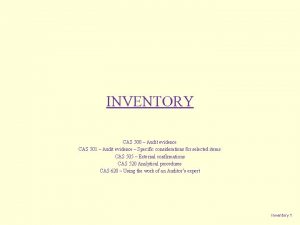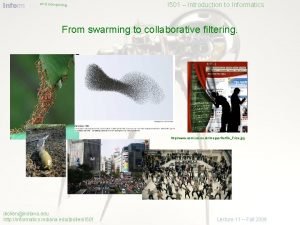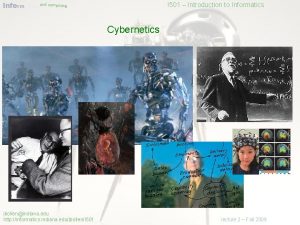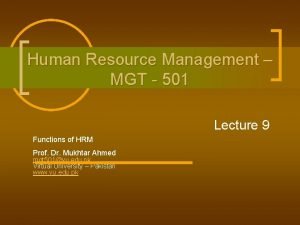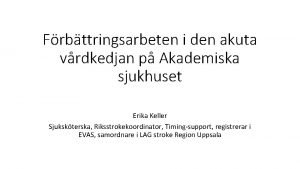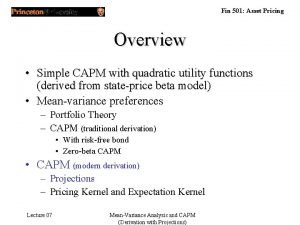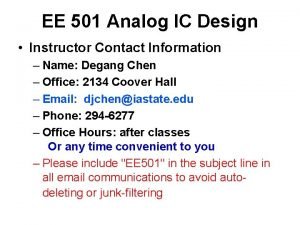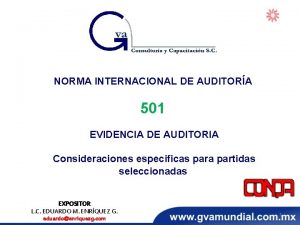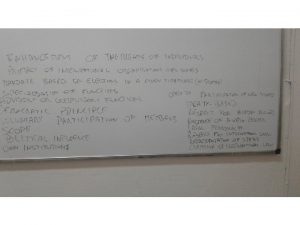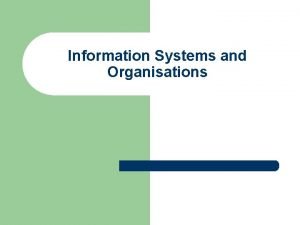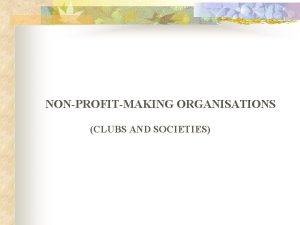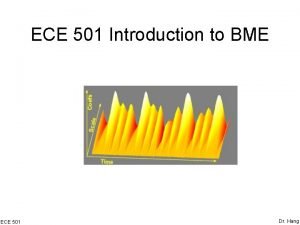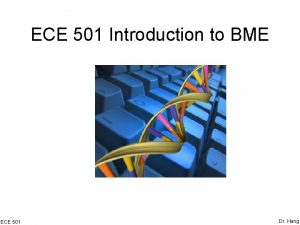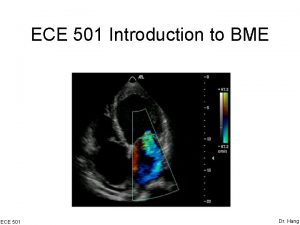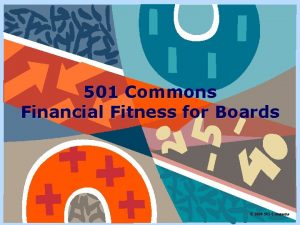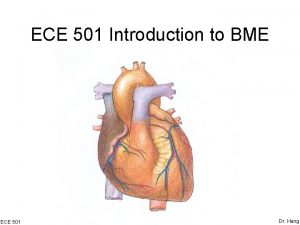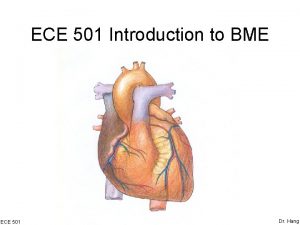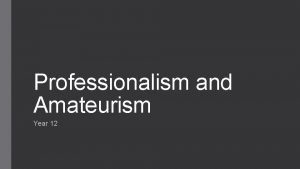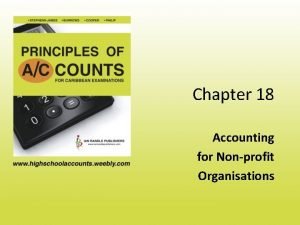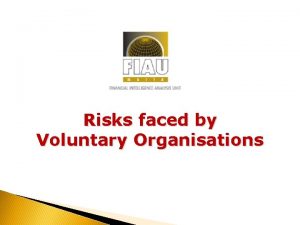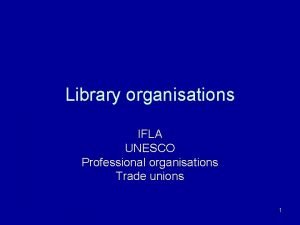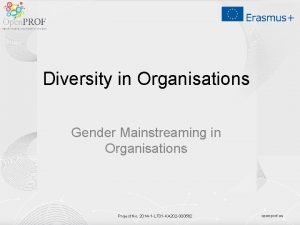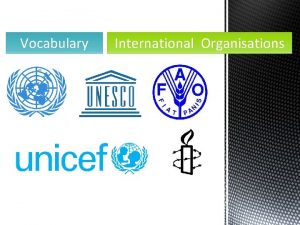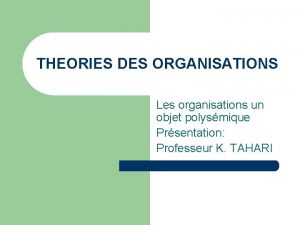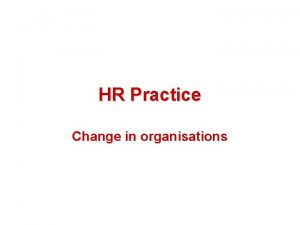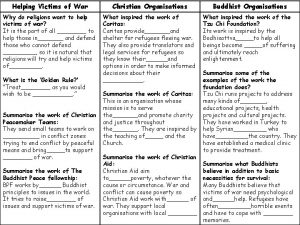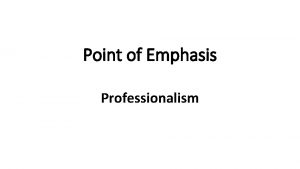Professionalism and Organisations MN 501 Week 1 Professionalism










































- Slides: 42

Professionalism and Organisations MN 501 Week 1: Professionalism and Business Prepared by Dr Belal Chowdhury Updated by Dr Deepani Guruge and Assoc. Prof. Nalin Sharda

This Week’s Lecture Week 1: Professionalism and Business • • • Professionals Professionalism Career Development Climbing the Corporate Ladder Types of Business Organizations Business Structure Ref: Chapter 1, “A pocket guide to business for engineers and surveyors”, H. E. Bergeron.

What is Engineering ? Engineering explained • Mobile phones • Burj Khalifa (the world's tallest building), • Computer games • Toothpaste • Sydney Harbour Bridge • Airplanes. • https: //www. youtube. com/watch? v=bip. TWWHya 8 A

What is Engineering ? Engineering is an occupation with extremely wide reach. The term 'engineering' covers many fields and skills. Engineering skills include: • the scientific method • social, cultural and economic awareness • mathematics • biology, chemistry, physics and other areas of science • creativity • teamwork https: //www. engineersaustralia. org. au/career-development-centre/what-engineering

What is Engineering ? Engineers are: • scientists, inventors, • designers, builders and • great thinkers. They improve the state of the world, amplify human capability and make people's lives safer and easier Reference: Engineers Australia https: //www. engineersaustralia. org. au/career-development-centre/what-engineering

What is Engineering ? Engineering disciplines cover: Mechanics and the construction of • tools and machines of all sizes, from • nano scale to entire mega manufacturing facilities. The creation of: • cars, trains, ships, boats, aircraft. The design and production of: • Chemical compounds • Entertainment industry • Transport • Healthcare • Defence, and • Networks

What is a Professional Engineer? • Any act of planning, designing, composing, evaluating, advising, reporting, directing or supervising (or the managing of any such act) • Requires Specialised skills and knowledge to apply engineering principles, and • Concerns the safeguarding of life, health, property, economic interests, the public welfare or the environment.

Who is a Professional? A professional is a member of a profession or any person who earns their living from a specified professional activity.

Professional? • A profession is who you are, – not just what you do – not what you look like, e. g. , is this clown a good engineer? – not a contract • Professional require advanced training and experience • They must implement their decisions and make correct judgements in the course of their work • Requires to contribute to the society

Attributes of a Profession ? • In 1957, Prof. Ernest Greenwood • Described 5 attributes of a Profession. • Foundation for most recent Publications

Attributes of a Profession (PMBOK) 1. A Unique Body of Knowledge - Implies the existence of principles and concepts that are unique to the profession - Is taught in graduate or professional schools; e. g. , the specialized body of knowledge for the engineering profession is taught in engineering schools. 2. Standards of Entry – Minimum standards for entry into the profession imply progression in a career – Typically involve formal education leading to an academic degree; several years of experience, as in an apprenticeship program or as a beginner in the profession 7

Attributes of a Profession (PMBOK) 3. A Code of Ethics - Ethical standards, or a code of ethics, are common to most professions - Avoiding or limiting the necessity for legal controls on the profession Ethics describes: • Standards / codes of behaviour expected of an individual by a group (nation, organisation, profession) to which an individual belongs.

Attributes of a Profession (PMBOK) 4. A Service Orientation to the Profession – Reflects an attitude of the members of the profession – Reflects an attitude by which members are committed to bettering the profession itself 5. Authenticating body or Sanctioning Organization - Sets standards and acts as a self-policing agency - Promotes publications and the exchange of ideas, encourages research, develops and administers certification programs, and sponsors and accredits education programs - Moreover, is to administer the profession.

Professional? • Person formally certified by a professional body of belonging to a specific profession by virtue of having completed a required course of studies and/or practice. • Has specialized skills and knowledge that required independent effort on their part to attain • A professional is passionate, motivated, and punctual • Personal competencies can usually be measured against an established set of standards.

IT / Networking Professionals • Many IT / Networking workers have duties, background and training that qualify them to be classified as professionals, e. g. – Programmers – Systems Analysts – Database administrators – Network administrators – Chief Information Officer – Fibre Optic Designers

Professional associations • • Professional associations usually specify a code of conduct for their members. Consider Australian Computer Society (ACS), Australian Interactive Media Industry Association (AIMIA), and Design Institute of Australia (DIA) IEEE: The Institute of Electrical and Electronics Engineers, Piscataway, New Jersey, USA. Join at least one relevant organisation

Professional Relationships Professional relationships to be managed -Typically professionals are involved in multiple relationships Such as: • Professional employer • Professional client (internal or external) • Professional suppliers • Professional other professionals • Professional system users • Professional wider community

Professional to professional -Relationships Professional often feels a degree of loyalty to the other members of their profession. Ø Help each other and Ø Slow to criticize each other in public. Ø Serve as mentors – help new members of the profession Ø Should prevent ethical problems – such as Resumé inflation – lying on experience and knowledge Ø Should not share confidential corporate information – about customers, suppliers, project plans, budgets - accidental and deliberate

Relations with the community • Establish and maintain professional standards that protect the public -Safety standards to protect users and the wider public • E. g. When a system analyst design a computer based system to monitor chemical manufacturing process – he has to consider residents near the plant and should maintain the pollution standard to protect the public. • Eliminate potential harm – or risk to wider community • There are number of professional organizations that provide – Professional code of Ethics to protect the public

Characteristics of professionals • Knowledge/expertise – established body of knowledge • Knowledge applied for clear purpose – perform a recognized service to the community. • Membership – formal process to join profession. • Reliable – general accepted that all members are properly trained and capable

Characteristics of professionals • Control access to (membership of) the profession – apprenticeship, license, on-going qualification, withdrawal of license, expulsion • Acquisition of knowledge – direct instruction and learning for membership candidates e. g. University courses • Codes of Conduct – establish acceptable standards of business operation and personal and public behaviour

Power of Professionals • Community leaders – people look for proper guidance and advice from professionals in matters they are expert in • Respected – the professional operations and behaviour of members is monitored and judged by peers • Services sought – considered the best people to do a particular type of job • Reliable – maintain quality control over members services, provide a mechanism for client complaints in respect of members business operation

Professional Bodies • Universities – provide licenses to practice professionally • Colleges and Societies – created to administer standards and control training e. g. • • • EA: Engineers Australia, ACS: Australian Computer Society IEEE: Institute of Electrical and Electronic Engineers ACM: Association for computing Machinery CCNA: Cisco Certified Network Associate. IT certification from Cisco at associate level for IT Career.

Professional Standards Are maintained by • Training – formal practical instruction, approved school, University, College; TAFE courses, or apprenticeships • Licensing – require proof from candidates of level of knowledge and agreement to adhere to standards of behaviour and business practice • Legislate – judicial and disciplinary mechanisms and review panels to investigate and punish members who violate standards • Ethical codes – enforced through published codes and membership agreements

Australian standard 8015 • AS 8015 -2005 - Australian Standard for Corporate Governance of Information and Communication Technology (ICT) • AS 8015 -2005, was published in January 2005. • It is a brief and concise, 12 page guide to effectively governing the use of ICT. – "Corporate Governance of Information and Communication Technology (ICT) is the system by which the current and future use of ICT is directed and controlled. It involves evaluating and directing the plans for the use of ICT to support the organization and monitoring this use to achieve plans. It includes the strategy and policies for using ICT within an organization. " - AS 8015: 2005

Australian standard 8015 The AS 8015 framework provides a model, vocabulary and six Principles for Good Governance of ICT http: //www. ramin. com. au/itgovernance/as 8015. html 1. 2. 3. 4. 5. 6. Establish Clearly Understood Responsibilities for ICT Plan ICT to best support the organisation Acquire ICT validly Ensure that ICT performs well, whenever required Ensure ICT conforms with formal rules Ensure ICT respects human factors

Career Development Career Options • Public sector • Work/life balance • Secure job • Make a difference to the community • Private sector • Job satisfaction • Provide more opportunity for quick advancement 6/19/2021

Career Development Career Options • Self employed • • 40% of you will start your own businesses Freelance work Contract jobs Networking • Research • • Opportunities for honours / masters and post-grad What is the difference? What are the benefits? What do I do? How do I get involved

Career Development On average • A person will change jobs six times in their lifetime • The self employed will have at least 7 failed businesses before they get it right • Contracts are the future of the IT and engineering sectors 6/19/2021

Career Development • Engineering - Career Path

Climbing the Corporate Ladder • Networking with the key people • Determination to succeed/singlemindedness whatever it takes • Taking more risks than others • Looking very active and fast-moving • Insist that your team only provide a highquality work product • Take on unpopular or difficult assignments joyfully and accomplish them successfully 6/19/2021

Climbing the Corporate Ladder • Communicate frequently with your boss and co-workers regarding your clients, projects • Develop a leadership style that earns respects from your clients and other team members. • Keep learning - explore educational opportunities or professional developments, Obtain an advanced degree • Go back to the profession through participation in professional bodies, e. g. , Engineers Australia, ACS, IEEE etc. 6/19/2021 33

Professionalism A specific style of behavior in the workplace. Professionalism is in the eye of the observer.

Professionalism • “Professionalism is indeed a question of how we do things, rather than what we do. Professionalism is an attitude which influences standards, ethics and processes. It defines what we stand for and what we stand against” - Len Warwick • True professionals create positive experiences for their clients 6/19/2021

Professionalism • “Professionalism comprises the personally held beliefs about one’s own conduct as a professional. • It’s often linked to the upholding of the principles, laws, ethics and conventions of a profession as a way of practice. ” -Professional standard council Australia http: //www. psc. gov. au/what-is-a-profession 6/19/2021 Updated by Dr Deepani Guruge 2016 36

Types of Business Organizations • • • Sole trader Partnership Private Limited Company (“Ltd”) Public Limited Company (“plc”) Co-operatives (member-owned business organisation) • Franchises (e. g. , Mc. Donalds) • Public sector • Association (charities and hobbyists)

Business Structure • One of the key decisions need to make when starting a business is • which legal structure to use • get advice from a qualified independent business, financial or legal advisor. • Depends on the size and type of business

Business Structure - Legal Structure

Organizational Chart 6/19/2021 Updated by Dr Deepani Guruge 2016

Organizational Chart

This Week’s Summary • • • Professionalism Career Development Climbing the Corporate Ladder Types of Business Organizations Business Structure

References • Bergeron, E. (2009), A Pocket Guide to Business for Engineers and Surveyors, Wiley • H. T. Tavani: Ethics and Technology: ethical issues in an age of information and communication, John Wiley and Sons, Inc. • http: //class. georgiasouthern. edu/writling/professio nal/Tech. Write/8 -1/rhodes/index. htm • http: //zdubpost. com/2012/09/06/performancepunishment-the-flaw-that-bleeds-talent-from-allcompanies/
 Week by week plans for documenting children's development
Week by week plans for documenting children's development Contemporary organisations
Contemporary organisations Public sector business
Public sector business Rms spor
Rms spor How humans behave in organisations
How humans behave in organisations Psychologie du travail et des organisations dolan
Psychologie du travail et des organisations dolan Cycle de vie de l'entreprise selon greiner
Cycle de vie de l'entreprise selon greiner What do you mean by non trading organisation
What do you mean by non trading organisation Find an end point assessment organisation
Find an end point assessment organisation Understand employer organisations
Understand employer organisations Christopher coakley
Christopher coakley Communication socionumérique des organisations
Communication socionumérique des organisations Psychosociologie des organisations
Psychosociologie des organisations Schools as organisations
Schools as organisations Explorer les organisations du monde
Explorer les organisations du monde Barema 501 onderwijs
Barema 501 onderwijs Arabské číslice
Arabské číslice Bds 501
Bds 501 Somos um pequeno povo mui feliz
Somos um pequeno povo mui feliz Eng 501
Eng 501 Ariane 501
Ariane 501 Dev 501
Dev 501 Cis 501
Cis 501 Cis 501
Cis 501 Cis 501
Cis 501 Cis 501
Cis 501 Cisco pix 501 specs
Cisco pix 501 specs Valuacion de inventarios
Valuacion de inventarios Wgsd canvas
Wgsd canvas Sempre vencendo mui vitorioso
Sempre vencendo mui vitorioso Cs 501
Cs 501 Bios 501
Bios 501 Bios 501
Bios 501 Mgt 501
Mgt 501 Mgt 501
Mgt 501 Cas 500
Cas 500 I 501
I 501 I 501
I 501 Mgt501 human resource management
Mgt501 human resource management Anna sprinchorn
Anna sprinchorn 501
501 Taandme
Taandme Norma 501
Norma 501


